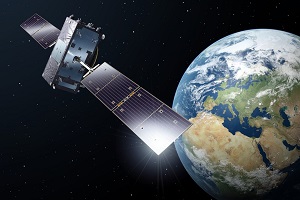The number of remotely monitored patients grew by 51% to 4.9 million in 2015 as the market entered a growth phase fuelled by rising market acceptance in several key verticals.
This number includes all patients enrolled in mHealth care programs in which connected medical devices are used as a part of the care regimen. Connected medical devices used for various forms of personal health tracking are not included in this figure. Berg Insight estimates that the number of remotely monitored patients will grow at a compound annual growth rate (CAGR) of 48.9% to reach 36.1 million by 2020.
The two main applications are monitoring of patients with implantable cardiac rhythm management (CRM) devices and monitoring of patients with sleep therapy devices. These two verticals accounted for 81% of all connected home medical monitoring systems in 2015.
Telehealth is the third largest segment with 0.41 million connections at the end of the year. All other device categories – including ECG, glucose level, medication adherence and others – stood for less than 0.2 million connections each at the end of the year. The sleep therapy segment accounted for the majority of the market growth in 2015.
ResMed was especially successful with its new Air Solutions family of sleep therapy devices that includes a cellular M2M module as standard and is supported by a comprehensive range of health informatics software that enable healthcare organisations to provide better care more efficiently. ResMed surpassed Medtronic as the world’s largest provider of connected healthcare solutions for remote patient monitoring in 2015. Earlier in 2015, Medtronic became the first company in the world to surpass the milestone of 1.0 million remotely monitored patients.
Another landmark event in 2015 was that cellular connectivity surpassed PSTN and LAN as the most widely used connectivity technology for remote patient monitoring. The number of PSTN-connected devices has started to decline sharply as a result of the decline in PSTN subscriber bases and the forthcoming digitalisation of PSTN networks, whereas the use of LAN and Wi-Fi connectivity for remote patient monitoring has remained very limited to date.
“Cellular continues to be the only technology that can be used to reliably connect every patient with their healthcare providers”, said Lars Kurkinen, senior analyst, Berg Insight.
An emerging alternative is that patients use their own mobile devices as health hubs. The bring your own device (BYOD) model can in theory be very cost-efficient as no dedicated hardware or subscriptions are needed, but accounted for less than two% of all connections in 2015.
Mr. Kurkinen predicts that BYOD will be especially useful for patient-centric engagement programs in therapeutic areas such as diabetes and asthma that have younger patient demographics compared to many other chronic diseases. In fact, many of these patients will prefer to use their own smartphone as the interface instead of carrying around a dedicated device for remote monitoring.
Comment on this article below or via Twitter: @M2MNow OR @jcm2m










